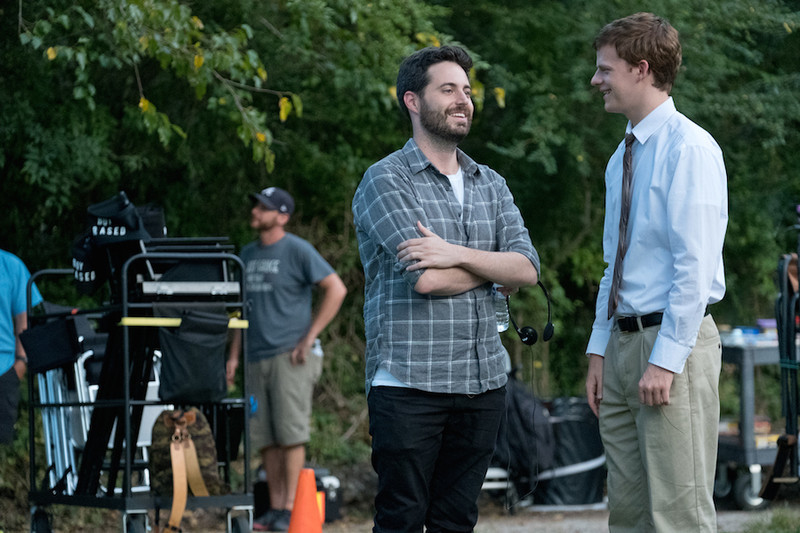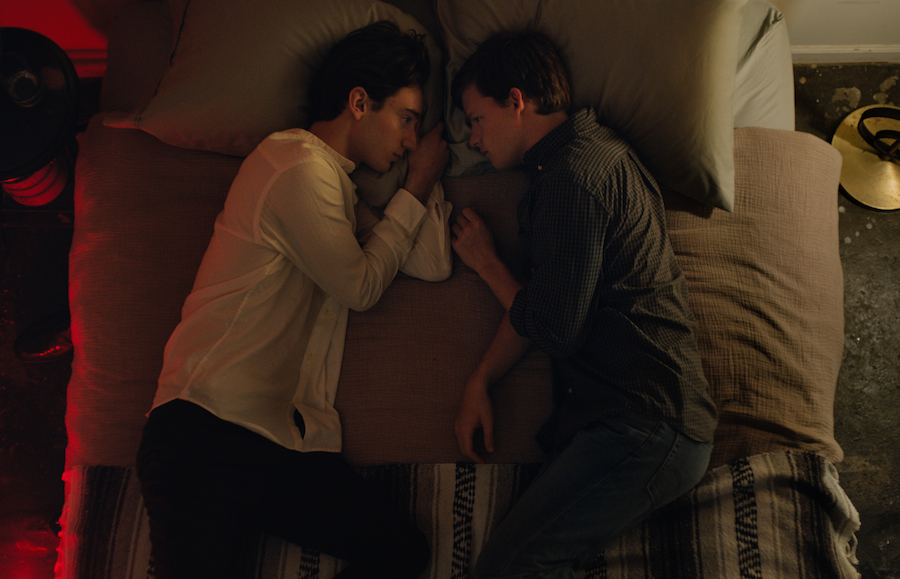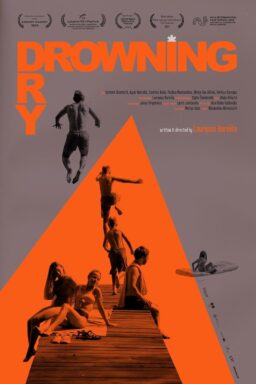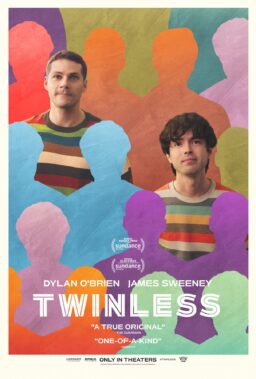“You’re a revelation” is the opening lyric to a memorable song haunting the soundtrack of Australian actor-turned-filmmaker Joel Edgerton’s sophomore directorial feature, “Boy Erased.” At first I thought it was the reverent hymn of a Christian band until I listened closer to the lyrics that followed (“Won’t you liberate me now / From a holy world”) and realized the tune was actually a poignant subversion of the genre penned by Sigur Rós frontman Jónsi and one of the film’s co-stars, Troye Sivan. The irony is that many hits on Christian radio stations could easily serve as anthems for gay rights, one key example being Steven Curtis Chapman’s “Live Out Loud.”
Based on Garrard Conley’s 2016 memoir of the same name, “Boy Erased” charts a different sort of spiritual awakening, as Jared (Lucas Hedges, in his finest of many showcases this awards season) learns to embrace his orientation while enduring exercises in self-hate led by Victor Sykes (Edgerton), the director at his gay conversion camp. Russell Crowe and Nicole Kidman turn in touchingly restrained work as Jared’s parents, neither of whom are portrayed in an overtly negative light. Like Jeff Nichols’ fact-based Oscar contender “Loving,” which starred Edgerton and Ruth Negga as an interracial couple whose marriage led to a landmark Supreme Court ruling, this film takes a sensitive, empathetic approach to its subject matter. Even viewers on the other side of the ideological aisle could easily find themselves getting swept up into this story. As Garrard’s endearing mother, Martha, noted at the film’s TIFF premiere, she sent her son to conversion therapy, and was surprised to find herself become the one who was converted.
While in town for the film’s well-received screening at the Chicago International Film Festival, Edgerton and Conley spoke with RogerEbert.com about breaking away from homophobic culture, using cinema as a tool for advocacy and portraying shades of palpable horror in their film, complete with a sly Kubrick reference.
In light of recent controversies regarding representation, which have caused an increasing number of people to question who has the right to tell whose stories, how important is a collaboration like the one you’ve both forged in making a true story authentic?
Joel Edgerton (JE): In this case, I think it was crucial. Even if it wasn’t a question of representation, if you are telling someone’s true story, why wouldn’t you grant that person full access to all areas of the production? Unless you were trying to bend the story into something different, in which case you’d want a respectful separation from the subject. The first thing that happened to me after I read Garrard’s book was I almost wished that I hadn’t read it. I liked the idea of it becoming a movie so much that I became a bit disgruntled with myself, because I thought—and I’ve often said this to Garrard—I didn’t feel like I was the right person to make it. I didn’t feel like I had the right to make it, and it took a series of quick steps in order to convince myself otherwise. The obsession I had developed with the material was ever-present in my mind on a daily basis. No one else was really competing with me to turn it into a film, and I thought it should be made. So I figured, “If I’m that obsessed, why shouldn’t I be involved in making the film, in some way?” Then I just started moving things forward in order to make the movie happen on a producing level. Once I got creatively involved, then the next big thing was sharing every step of the journey with Garrard—finding, receiving and hoping for his approval.
Garrard Conley (GC): The first time we sat down, Joel wanted to meet with survivors of conversion therapy, not just me, so that was a good sign. I had seen him doing press for “Loving,” and he was always fighting for marriage equality. That was a really cool moment, because he didn’t have to do that. It wasn’t like that was going to make or break the film, but he did it anyway, so I already knew that he was an ally before we began working together. No one else was knocking at my door to make this film or make this subject something dramatic. There had always been a sort of sarcastic or satirical tone to the portrayals of conversion therapy in film. “But I’m a Cheerleader” is wonderful, but it’s so exaggerated that the only people that are going to be watching it are your own community. And if it’s not your community, the people watching the film will be laughing at it and being like, “I guess everyone at a conversion camp just wants to have sex with each other.” In reality, of course, when you’re being tortured psychologically, sex is the farthest thing from anyone’s mind. You’re not thinking, “That guy is hot over there.” Thoughts like that may slip in every now and then, but very rarely. [laughs]

JE: It does make sense, from an outsider’s perspective, to think that. I recently did a little press tour in Australia, and was able to put faces to the statistics down there regarding survivors of conversion therapy—those who knew it was going on and were impacted personally by it. I kept reflecting on how absurd the concept of conversion therapy is. It makes sense that the people portraying its absurdities would want to render it in that way.
GC: But isn’t that so telling of the fact that it’s not an insider’s perspective?
JE: Yes, and after you acknowledge the craziness of the therapy and have an incredulous reaction to it all, the sobering moment arrives when you realize that at this very moment, this story represents the reality of not just one person, but a great many people. The absurdity of that injustice and the discombobulated combination of ideas that it comprises is the reality for people around the world.
GC: And once you treat it as tragedy or drama, it takes a different tone. You can’t have the same humorous perspective on the whole thing. With that being said, I was a consultant on “The Miseducation of Cameron Post” as well, and I really love that there are these two different takes that exist. “Boy Erased” is the tougher one, in my opinion. Every survivor who sees the film finds it hard to watch because the verisimilitude is so high, whereas you feel safer watching “Cam Post” with your community. You can all go out and watch this fun film that also happens to be a bit traumatic. After you watch “Boy Erased,” you’re like, “Oh my god, what am I going to do?” [laughs] It’s cool that we can use both of these films as tools for advocacy in one year and actually make the issue mainstream.
Another of this film’s great achievements is it makes the viewer feel empathy for every character, even Victor Sykes, who seems to be projecting his own self-loathing onto the kids he is supposedly “helping.”
JE: I was taking my lead from Garrard’s book, in a sense. “Loving” actually does have a lot to do with “Boy Erased” because it triggered my deep interest in the subject of injustice. It also taught me the great dramatic value in telling stories of people who are being robbed of their personal freedoms. These people are not hurting anybody, they have simply been born a certain way out of their control. With “Loving,” Jeff showed me how to tell a true story truthfully. He didn’t try to sensationalize the story. He gave it its own pacing while rendering each step of Richard and Mildred Loving’s evolution as a couple with honesty. What struck me when I read Boy Erased was that Garrard—for everything that had been imposed upon him, done to him, for all of the coercion and duress and confusion—still managed to have empathy for the people that put him through this ordeal…the parents, therapists, and religion at large. Rather than colluding to hurt others with evil intention, this handful of people truly thought they were providing help, and the hurt that they’ve caused is an accidental byproduct of their misguided belief. That, to me, is more interesting, more dramatic and more terrifying.
GC: It is. The people who love you can hurt you the most.
JE: When I grew a mustache to play Victor, I just tried to make sure I didn’t twirl it.
GC: But you also met with the real-life Victor Sykes.
JE: Yeah, I got connected with John Smid, thanks to Garrard. I had lunch with him in Texas—spoiler alert—with his new partner, and he was very open and willing to discuss the things that he had done. He provided the sort of insight that helped me get into his head. People have asked me why I’d have an interest in playing someone like him. The beauty of it is you get paid to pull out parts of your personality that you would never put on display, and to flick the switch on your own belief systems.
GC: You mean you’re not a homophobe? [laughs]
Spoiler alert!
JE: I don’t know if I was ever a homophobe, but I had grown up in a culture of homophobia where I always was part of a pack mentality. When I was touring with “The Gift,” I spoke about how there was part of me, as a kid, who was a bully. I was a bully and I was a victim of bullying. I know that words I’ve used in my past when I was in high school were homophobic slurs.
GC: I used them too.
JE: And I don’t think I even knew what homosexuality was at the time. There was such an intimidating culture of homophobia that no one ever risked coming out.
GC: It doesn’t even feel like a real thing. It’s almost myth-like. But the truth is, homophobia and bigotry effect everyone, whether or not you are wielding a weapon or receiving it. There are degrees of it, for sure, but it is a system that really hurts everyone. All toxic masculinity does.

Enormous tension is created by allowing the camera to either linger on empty space or keep crucial details out of the frame. This technique worked equally well in “The Gift,” and proves especially horrific in “Boy Erased” during the bunk bed sequence that culminates in Jared’s rape. The creaking of the bed above Jared’s—suggesting that the silent boy, Henry (Joe Alwyn), sleeping above him is awake and unwilling to answer his bunkmates’ questions—is immensely unsettling.
JE: I’m glad you pointed that out because that sound to me—that silence and the lack of an answer to questions posed by Lucas’ character—is so terrifying and it says so much. Shooting that scene was truly one of the toughest days I’ve ever had onset, behind of or in front of the camera.
GC: It’s weird for me to say this, but that’s one of my favorite scenes in the whole film, because it was the one that I was the most nervous about capturing correctly. I think that Joel did such a wonderful job showing the nuance of that scene, where something that you’ve wanted so badly becomes a nightmare so quickly. It’s one of the reasons why you agree to do something like conversion therapy because you’re spinning out of control after the trauma of being raped. The subsequent scene of Lucas sobbing in the bathroom was great too. I’m just so proud of this sequence because it’s a real testament to Joel entering that headspace and entering my story in a way that is not sensationalistic but also very dramatic and full of tension. It almost became a horror film for a little while, which I loved as well. The thing about conversion therapy that people get wrong a lot of the time is, yes, we’ve had lobotomies, we’ve had electroshock therapy, but psychological torture—those moments that are really fraught with silence while sitting across from someone that you know doesn’t have your best interests at heart—that is terror too. You don’t have to show a mass murder or fifty lobotomies in order to conjure real terror, and Joel is obviously the person to make that come to life.
JE: Some of those ideas perpetuated by conversion therapy are so insidious. The rape scene actually links to one of the things that Garrard taught me, that conversion therapy treated homosexuality and same-sex attraction as a sort of catch-all for deviancy. He and the other boys at the camp were told that if you were gay, it would no doubt lead to you being a predator of some kind, a pedophile or a rapist. So after a young guy like Jared is assaulted, he starts to question—like many survivors of sexual harassment and assault have—whether he asked for something, whether he put certain signals out into the world, whether he deserved what happened to him. This may become their definition of a first sexual experience, making them believe that this is what sex is like for homosexuals, so that when they are entering conversion therapy, those ideas are put into the kiln, fired and made solid, which can be really lasting and damaging.
GC: One of the things that I loved about the film is that it counterbalanced the rape with that sweet moment with Xavier [Théodore Pellerin] in the apartment, where he and Jared hold hands in bed. It shows that Jared has one good memory of being with a man to hold onto, and that’s enough to launch him out of his entrapment. It’s powerful.
Jared’s rape in “Boy Erased” is also counterbalanced, in some ways, by the erotic bedroom scene between Chloë Grace Moretz and Emily Skeggs in “Cameron Post.” Before we part, there is one detail I must ask about in “The Gift.” Rebecca Hall’s hospital room number in the film is 237, a callback to Kubrick’s “The Shining,” which is fitting since both movies are about the past catching up with you. Was that intentional?
JE: Absolutely. You may have noticed that there is a reference to 237 in this film as well.
GC: There is?
JE: Henry’s room.
GC: [gasps] That’s amazing!
JE: Jared asks, “What room are you in?” and Henry answers, “237.” That number is going to end up in every single film I make. Another Aussie director, Murali K. Thalluri, made a movie called “2:37,” and I’ve never asked him if that’s also a “Shining” reference.
GC: Oh my god, I am going to bring that up in every interview. [laughs]












